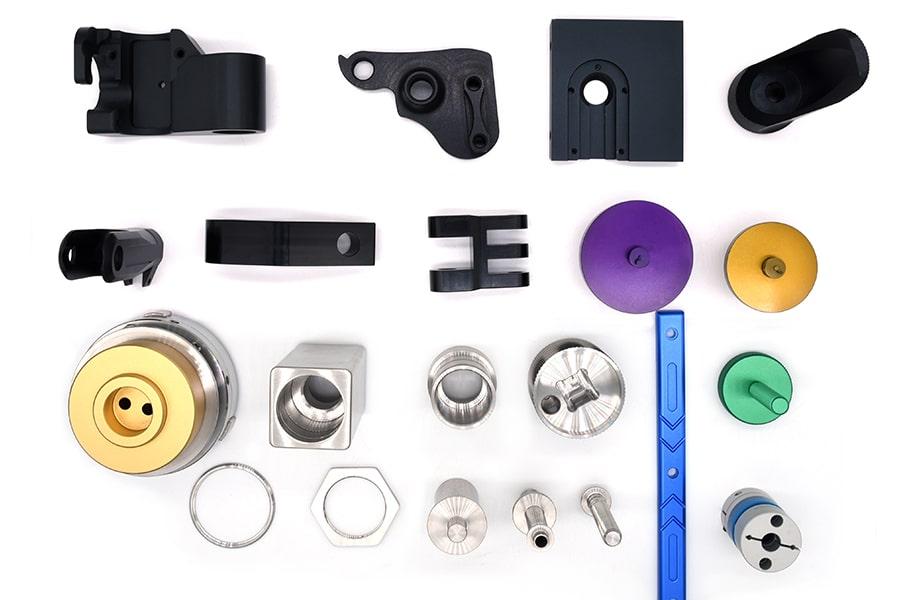CNC machining car parts
CNC machining car parts involves the use of computer numerical control (CNC) machines to precisely shape and finish various components used in cars. This automated manufacturing process allows for high accuracy and repeatability, resulting in parts that meet tight tolerances and specifications.
Here are some common car parts that can be CNC machined:
- Engine components: CNC machining is used to create precise engine parts such as cylinder heads, crankshafts, pistons, and connecting rods. These parts require high precision to ensure proper functioning and performance.
- Suspension parts: CNC machining can be used to manufacture suspension components like control arms, steering knuckles, and strut mounts. These parts need to be structurally sound and have specific geometries for optimal performance and safety.
- Transmission components: CNC machining is essential in creating transmission parts like gears, gear shafts, and clutch plates. These parts require precise machining to ensure smooth gear shifting and efficient power transfer.
- Brakes: CNC machining is used to manufacture brake components such as calipers, rotors, and brackets. These parts need to be accurately machined to provide effective braking performance and withstand high temperatures.
- Interior and exterior trim: CNC machining can be used to create precise and intricate interior and exterior trim pieces. This includes components like dashboard panels, door handles, and grilles, which require high-quality finishing.
CNC machining car parts offers several benefits, including improved efficiency, decreased lead times, and the ability to produce complex and customized designs. It is a crucial process in the automotive industry, allowing for reliable and high-quality car parts production.
Car parts overview:
- Engine: The most important part of a car that generates power to move the vehicle. It consists of various components such as pistons, crankshaft, camshaft, valves, and spark plugs.
- Transmission: This transfers power from the engine to the wheels, allowing the car to change gears and control speed.
Suspension system: It includes the shock absorbers, springs, and other components that provide a smooth ride and help maintain vehicle stability. - Brakes: The braking system includes the brake pads, rotors, calipers, and brake lines, which help slow down or stop the car when necessary.
- Battery: Provides electrical power to start the car and operates various systems like lights, radio, and ignition.
Alternator: This charges the battery and powers the electrical systems of the car while the engine is running. - Exhaust system: Responsible for collecting and expelling harmful gases produced by the engine, includes components such as the catalytic converter and muffler.
- Fuel system: Consists of components like the fuel pump, fuel filter, and fuel injectors, which are responsible for delivering fuel to the engine.
- Steering system: Allows the driver to control the direction of the vehicle, consisting of components like the steering wheel, steering column, and steering rack.
- Cooling system: Prevents the engine from overheating by circulating coolant through the engine block and radiator.
- Electrical system: Controls various electrical functions in the car, including lights, heating and cooling, and other accessories.
- Ignition system: Includes the ignition coil, distributor (or ignition module), spark plugs, and ignition switch, responsible for starting the engine.
- Tires: Connect the car to the road and provide traction and stability.
- Belts: Various belts, such as the serpentine belt, help drive components like the alternator, power steering pump, and air conditioning compressor.
- Filters: The car has various filters such as oil filter, air filter, and cabin air filter, which help remove impurities and maintain the cleanliness of fluids and air entering the car.
- Wipers: Move across the windshield to clear rain and debris, allowing the driver to have a clear view.
- Lights: Including headlights, taillights, brake lights, and turn signals, providing visibility and signaling intentions to other drivers.
- Sensors: Modern cars have various sensors such as oxygen sensors, ABS (anti-lock braking system) sensors, and engine sensors that provide data to the car’s computer system for optimal performance and efficiency.
Although not all parts can be manufactured via CNC, some are made via die casting, sheet metal, plastic injection, etc. Luckily, we provide all these services to make car parts. If you need to manufacturing something, feel free to contact us.
Search terms:
- CNC machining car parts
- cnc car parts China
- cnc auto parts
- cnc machining auto parts

